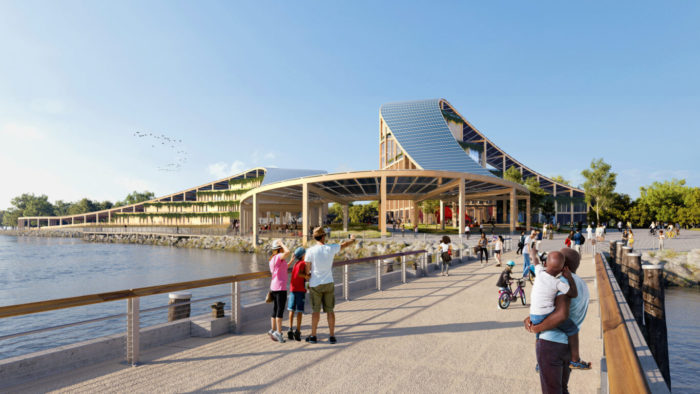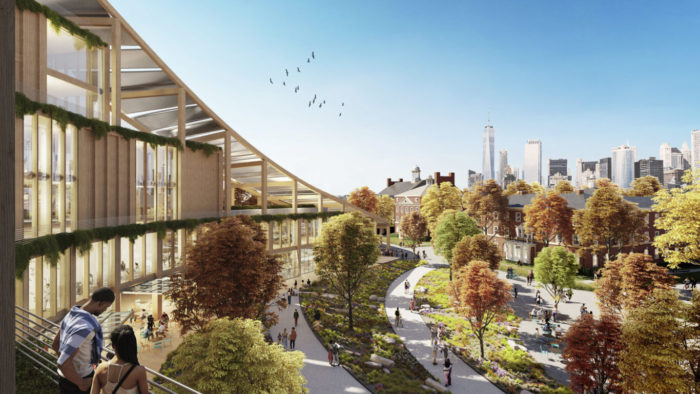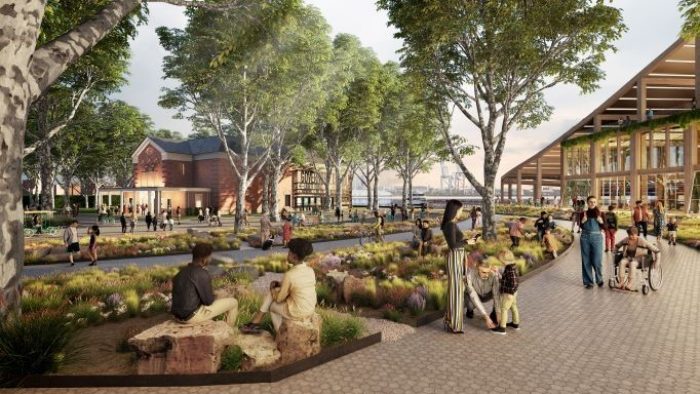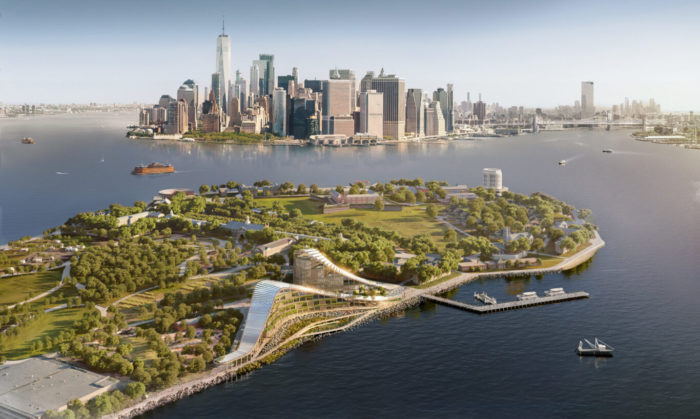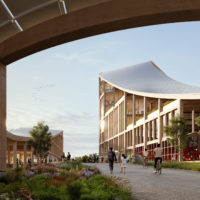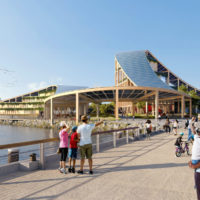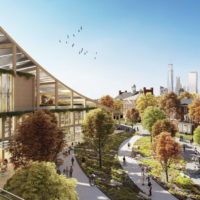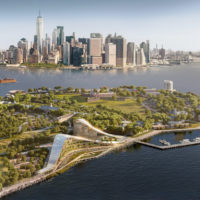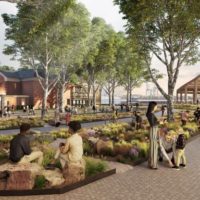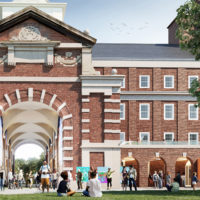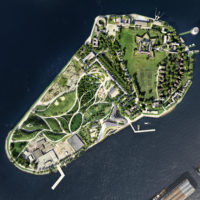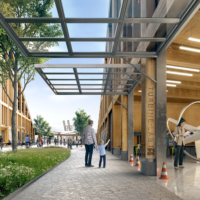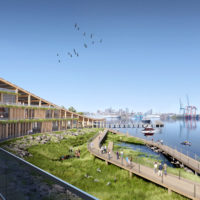Together with New York’s preeminent public research institution, Stony Brook University, SOM will build a zero-carbon campus dubbed “The Exchange” to tackle climate change. The New York Climate Exchange, or “The Exchange,” will be a local hub for the fast-growing sustainable economy and a pioneering international hub for creating and implementing innovative solutions to the world’s climate disasters.
At the press conference, New York City Mayor Eric Adams declared, “This is an ideal location for every New Yorker to explore and interact with nature because all of us are together.”
Concept Behind “The Exchange”
As the principal architect on the Stony Brook team, SOM worked for months generating plans for a new sort of campus that not only creates the framework for the post-carbon world but also centers an unforgettable new communal space for all New Yorkers.
SOM, in partnership with Mathews Nielsen Landscape Architects, Buro Happold, and Langan Engineering, conceived the conceptualization and operational execution of The Exchange, which will serve as a model for ecological responsibility by employing energy-positive design approaches such as mass timber construction, on-site solar panels, and incorporation into current buildings to achieve an ecologically friendly energy hub.
The concept incorporates new architecture within the island’s cherished park to make an active research facility for study, teaching, and community use that is in harmony with the lush greenery of Governors Island and the urban landscape of New York City.
The Exchange will serve as a model of ecological responsibility and resilience by being among the first sites in the country to attain True Zero Waste certification, supply all of its non-potable water needs from rainwater and purified wastewater, and use only electricity generated on-site, even producing sufficient energy to serve the city’s electrical supply.
As part of its mission to confront the cultural and economic difficulties created by the changing climate, The Exchange will host green employment assistance and developing skills initiatives for the community to help them launch promising careers and collaborate with regional organizations such as the Pratt Institute, Pace University, New York University, the City University of New York, SUNY Maritime College, Brookhaven National Labs, and IBM.
As Colin Koop, SOM Design Partner, put it, “Integrating flowing mass timber pavilions through the undulating topography of the park and recycling the ancient building fabric of Governors Island, our design for this new campus exemplifies the oversight necessary to tackle the climate catastrophe. Collectively, these locations will foster breakthroughs in climate research and serve as test beds for innovative technology that can be implemented across the city and beyond. We are excited to bring this significant project to reality with the help of the Governors Island Trust, Stony Brook University, and our team of design and engineering partners.”
As part of The Exchange, SOM will also work to renovate the existing Liggett Hall and Fort Jay Theater and design and build several new classrooms, laboratories, student housing, and other academic buildings. 4.5 acres of new green space will be created as part of the development. All the facilities at the Exchange will be powered by electricity, including some of the city’s first commercial mass timber architecture.
Key Elements of The Exchange Hub
1) A green-designed, 400,000-square-foot building complex that houses a variety of research labs, classrooms, displays, greenhouses, mitigation technologies, and residential quarters, as well as other amenities for students and researchers:
- The campus comprises all-electric structures, with solar photovoltaic power generation and batteries capable of covering all of the campus’s electricity needs and even having an excess to export to the utility grid.
- Rainwater and recycled water supply all of the city’s non-drinking water needs.
- There was a 95% reduction in landfill use, making this one of the first locations in the United States to be certified as True Zero Waste.
- No cellars, living coastlines, and elevating new construction to the +18-foot Design Flood Elevation (DFE) are all part of the climatic conditions-resilient architecture.
- The city’s newest and most updated structures will be the first in New York to earn certification from the Living Building Challenge.
2) An organization that seeks and supports innovative research and technological solutions to the climate challenge.
3) Opportunities for training and employment in the green economy for New Yorkers living in areas hit worst by climate change; once fully operational, this program is expected to train and employ over 6,000 people yearly.
4) Financial possibilities and partnerships with already working community groups to lessen climate change’s effects.
5) A Citizens Advisory Council, made up of influential locals who will help ensure that partners’ and neighbors’ opinions are taken into account and highlighted as they work together to apply innovative climate solutions, especially those that will impact communities with lower incomes of color.
6) A sustainable community that can function independently, “beyond zero,” to be self-sufficient.
7) Semesters “abroad” on Governors Island, fellowship and internship programs, and ongoing education are just a few examples of the academic and social initiatives that provide students of all levels with the theoretical background and practical experience they need to pursue careers in the field of climate change solutions and social justice.
The Exchange’s partnership is still trying to raise money for it. Still, they already have money from capital investment and donations from the Simons Foundation and Bloomberg Philanthropies to get them started. The price tag is predicted to be close to $700 million. Phase 1 will commence in 2025, with the first Exchange facilities getting life in 2028.
- ©SOM | Brick Visual
- ©SOM | Brick Visual
- ©SOM | Miysis
- ©SOM | Miysis
- ©SOM | Miysis
- ©SOM/Miysis, Courtesy New York Mayor’s Office.
- ©SOM/Miysis, Courtesy New York Mayor’s Office.
- ©SOM/Brick Visual, courtesy New York Mayor’s Office.
- ©SOM/Brick Visual, courtesy New York Mayor’s Office.



